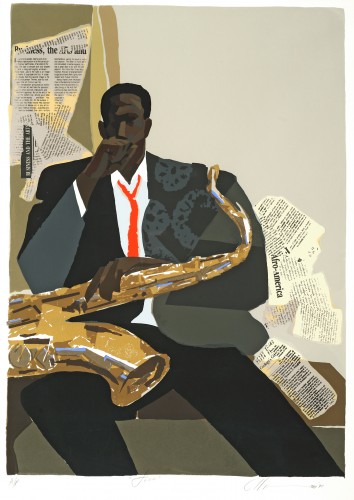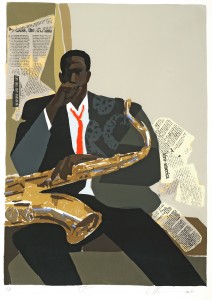
Ken Burns Jazz – Episode 6: “Swing: The Velocity of Celebration”
75 Russell Street
Lewiston, ME 04240

Joseph Holston, Jazz, 1990, Screenprint
In the late 1930s, swing is still a national craze that keeps on growing despite the Depression, although commerce sometimes leads to compromise and the individual expression at the heart of jazz is too often kept under wraps. But in the middle of the country – in black dance halls, roadhouses and juke joints – a new kind of music has been incubating. Pulsing, stomping and suffused with the blues, it is played by men and women seasoned in cutting contests that sometimes go on all night. It will fall to Count Basie and Lester Young to bring its healing power to the rest of the country. Meanwhile, Louis Armstrong finds true love. Benny Goodman takes his hot sound to Carnegie Hall and then is forced to rebuild the most popular band in America. And Chick Webb, in a bid to reach a national audience, takes a chance on an “ugly duckling,” a teen-aged singer named Ella Fitzgerald – and before tragedy strikes achieves all that he has hoped for. Billie Holiday finds a musical soulmate, travels two of the best bands in the country, and then expresses her pain and indignation at racism in America in one anguished song, “Strange Fruit.” In 1939, Coleman Hawkins records a familiar tune in a way so daring and so beautiful that it eventually helps to lead to a musical revolution in jazz, while Duke Ellington undertakes a triumphal tour of Europe and sees for himself that WWII is only weeks away.